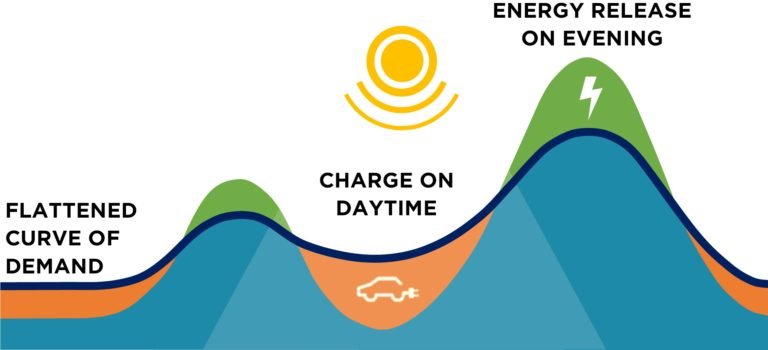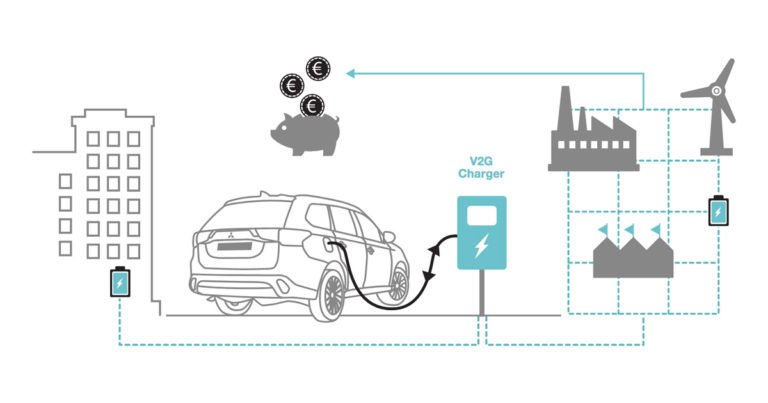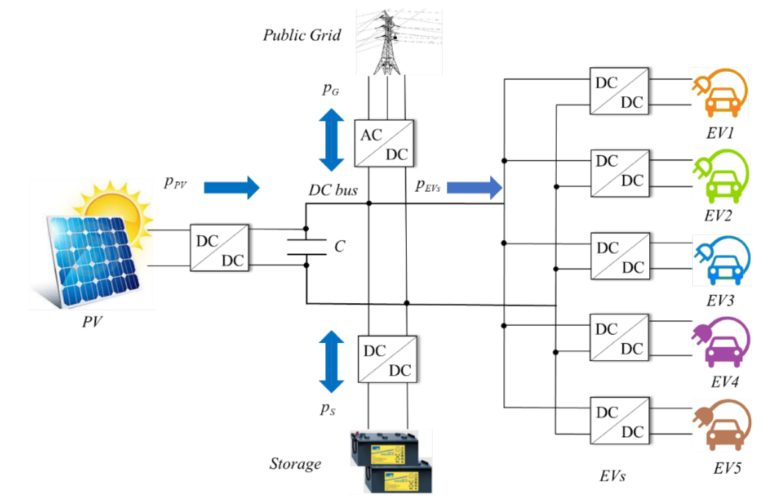Contents
ToggleProject: Electric vehicles on Netlogo
This mini project is part of the course carried out at ENSTA. This mini-project aims to produce, by constructive method, a simulation of Electric Vehicles on the Netlogo software.

The report to be submitted is a compressed file including a PDF detailing each part as well as the Netlogo code for each part. It should be noted that observation parameters (graph, counter, etc.) are to be added in order to validate your comments. These parameters are not explained in the specifications.
Part 1: EV and zones
This project consists of simulating the behavior of electric vehicles and their impact on the consumption of an eco-district.
The model must have an area that will be considered “Residential”, a “Recharge” area and the rest of the environment will remain empty. The Residential zone is at least twice the size of the Recharge zone.
At the start of the simulation, the Residential zones all have a fully charged electric vehicle (eg at 100).
At each tick, the vehicles unload 1. When a vehicle has a load less than 30, it goes to a Recharge area if available. The recharge per tick is 5.
If an electric vehicle is at 0, it turns Red and produces dissatisfaction. If a charging electric vehicle is full (100) it returns to its Residential zone.

Each point must be argued separately:
- Define agents, observer parameters, setup and go.
- Explain the chosen modeling (how to simulate the zones, how to move the cars, etc.).
- Carry out simulations
- What do you observe in a simulation (is this the desired behavior)?
- What do you observe in several simulations (is there always convergence)?
- What do you observe by changing the observer parameters (critical or cascading effects)?
Part 2: Charging and charging curve
The objective of the simulation is to simulate the charging curve caused by the recharging of electric vehicles. It is therefore essential for the user to have an indicator.
The load curve is equal to the sum of electric vehicle recharges at a given tick plus a constant for each residential zone (randomly between two min and max values).

Each point must be argued separately:
- Add the code to observe the load curve
- Carry out simulations
- What do you observe in a simulation (is this the desired behavior)?
- What do you observe in several simulations (is there always convergence)?
- What do you observe by changing the observer parameters (critical or cascading effects)?
Part 3: Addition of renewable energies
The Recharge zones all have a solar panel to recharge a local battery (only for the patch in question).
Each Recharge zone has a Battery variable and a Recharge user variable. The Battery has a maximum capacity of 100, and its initial value is zero. Recharging of the Battery is provided by the observer and takes place at each tick.
When an electric vehicle is recharging, it will reduce the Battery as a priority. If the Battery is empty, it will continue to charge and the intake will be counted via the charge curve.

Each point must be argued separately:
- Explain Battery Modeling
- Carry out simulations
- What do you observe in a simulation (is this the desired behavior)?
- What do you observe in several simulations (is there always convergence)?
- What do you observe by changing the observer parameters (critical or cascading effects)?
Part 4: Adding the Random
The following parameters, previously fixed, are now subject to a random at each tick:
- The loss of electric vehicles is either 0, or 1, or 2 per tick
- Battery recharge is between Recharge / 2 and Recharge
- The charge variable of electric vehicles is between 80 and 100 at initialization
- Battery variable is between 25 and 75 at initialization
- The consumption variable of residential areas has a hazard at each tick.

Each point must be argued separately:
- Explain the change in the code
- Carry out simulations
- What do you observe in a simulation (is this the desired behavior)?
- What do you observe in several simulations (is there always convergence)?
- What do you observe by changing the observer parameters (critical or cascading effects)?
